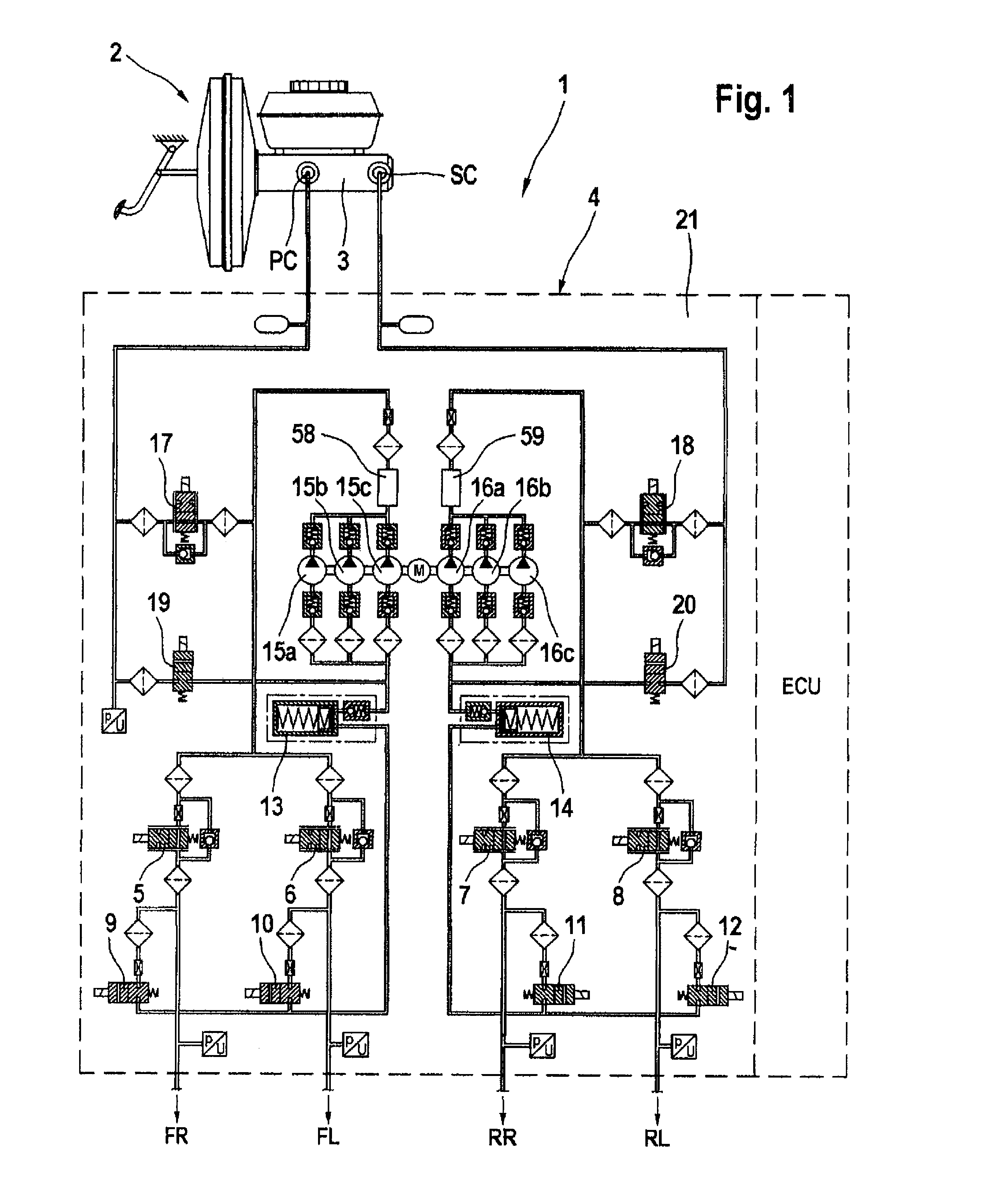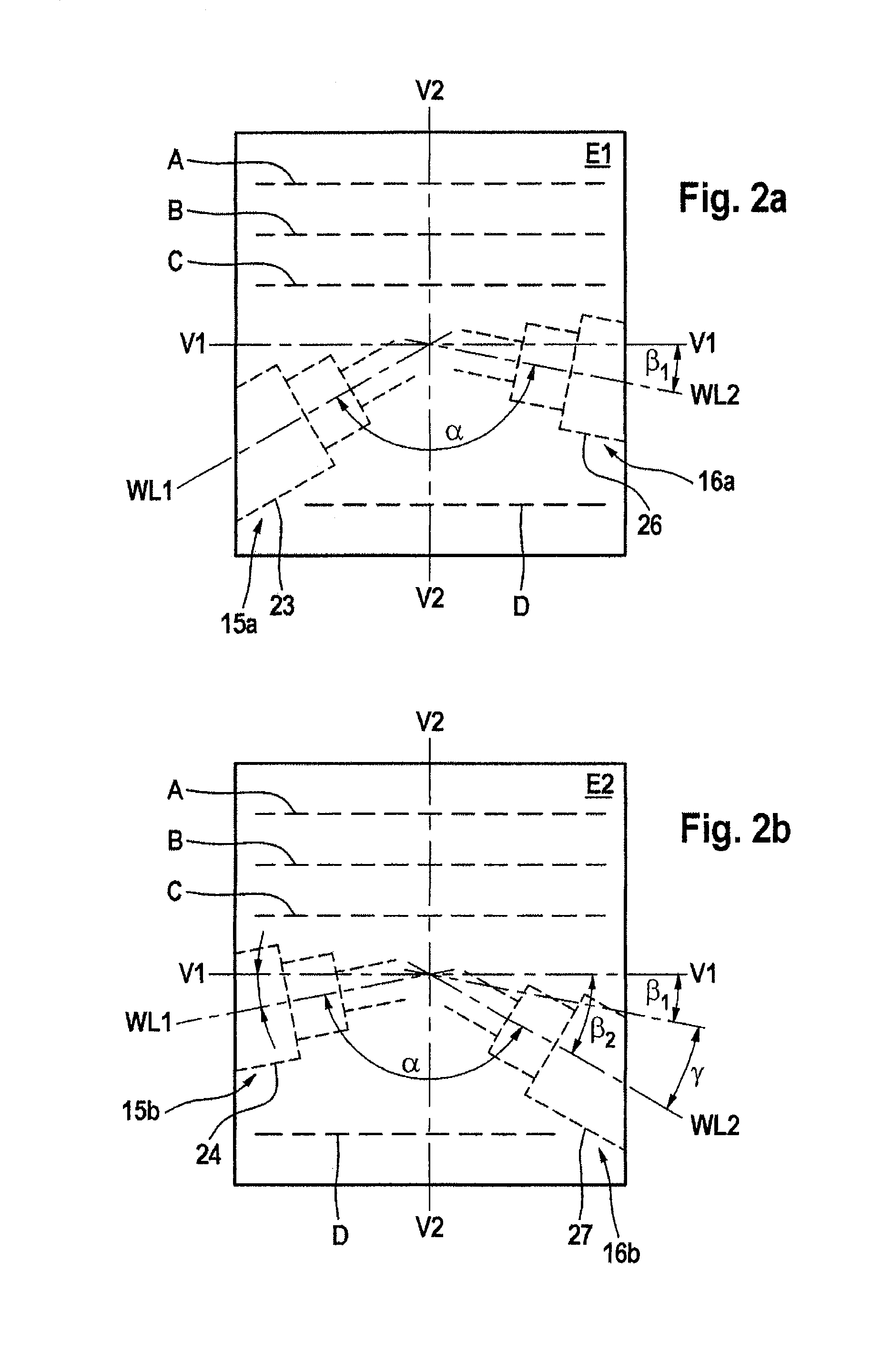Hydraulic unit for slip-controlled braking systems
a technology of hydraulic unit and braking system, which is applied in the direction of braking system, positive displacement liquid engine, liquid fuel engine, etc., can solve the problems of correspondingly high cost and complexity of drilling technology, less spatial economic positioning of remaining components, and difficulty in adjusting the braking system. , to achieve the effect of compact construction, complexity and cost of drilling, and further reduction of complexity
- Summary
- Abstract
- Description
- Claims
- Application Information
AI Technical Summary
Benefits of technology
Problems solved by technology
Method used
Image
Examples
Embodiment Construction
[0024]As shown in FIG. 1, an electrohydraulic braking system 1 comprises an actuating unit 2 with a master cylinder 3 and wheel brakes FR, FL, RR, RL organized in pairs in two different hydraulic circuits, which wheel brakes FR, FL, RR, RL are each connected both in a bundled manner and independently of one another either to a primary pressure chamber PC or to a secondary pressure chamber SC of the master cylinder 3.
[0025]Also located in the connection between master cylinder 3 and wheel brakes FR, FL, RR, RL is a hydraulic unit 4 with electronic control unit ECU which makes possible slip control for braking or drive. For this purpose the hydraulic unit 4 includes in a receiving body 21 currentlessly open inlet valves 5-8 and currentlessly closed outlet valves 9-12, which valves are connected in pairs upstream of the wheel brakes FR, FL, RR, RL.
[0026]Unnecessarily high pressure build-up within the ABS control cycles is reduced by activating the currentlessly closed outlet valves 9-1...
PUM
 Login to View More
Login to View More Abstract
Description
Claims
Application Information
 Login to View More
Login to View More - R&D
- Intellectual Property
- Life Sciences
- Materials
- Tech Scout
- Unparalleled Data Quality
- Higher Quality Content
- 60% Fewer Hallucinations
Browse by: Latest US Patents, China's latest patents, Technical Efficacy Thesaurus, Application Domain, Technology Topic, Popular Technical Reports.
© 2025 PatSnap. All rights reserved.Legal|Privacy policy|Modern Slavery Act Transparency Statement|Sitemap|About US| Contact US: help@patsnap.com



